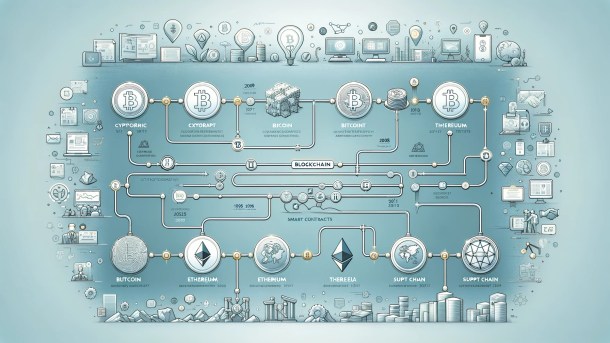Few technologies have generated as much buzz as blockchain. Often associated with cryptocurrencies like Bitcoin, blockchain technology has a fascinating history that predates its financial applications. Understanding its roots and evolution can offer valuable insights into its current and potential future uses. Let’s take a journey through the history of blockchain, uncovering the milestones that have shaped this revolutionary technology.
The Genesis: Pre-Blockchain Concepts
Before blockchain as we know it emerged, there were several key developments that laid the groundwork. In 1991, Stuart Haber and W. Scott Stornetta introduced the concept of a cryptographically secured chain of blocks. Their work focused on creating a system where document timestamps could not be tampered with. This early idea was primarily aimed at solving the problem of digital document authentication, ensuring data integrity and trust.
The Birth of Bitcoin and Blockchain
The real game-changer came in 2008 with the release of a whitepaper titled “Bitcoin: A Peer-to-Peer Electronic Cash System” by the pseudonymous Satoshi Nakamoto. Nakamoto’s creation of Bitcoin introduced blockchain technology to the world, providing a decentralized, secure method of recording transactions.
Blockchain’s key innovation was its ability to achieve consensus without a central authority, using a distributed ledger system. Each block in the chain contained a list of transactions, and once verified by a network of nodes, it became a permanent, unalterable part of the chain. This breakthrough addressed issues of trust and security that had plagued previous digital currencies.
Blockchain Beyond Bitcoin
While Bitcoin brought blockchain into the spotlight, it was only the beginning. Recognizing the technology’s potential beyond cryptocurrency, developers started exploring other applications. In 2013, Vitalik Buterin proposed Ethereum, a blockchain platform that introduced the concept of smart contracts. Smart contracts are self-executing contracts with the terms directly written into code, enabling automated and transparent transactions without intermediaries.
Ethereum’s launch in 2015 marked a significant expansion of blockchain’s capabilities, allowing developers to build decentralized applications (dApps) on its platform. This opened up a world of possibilities, from decentralized finance (DeFi) to supply chain management, healthcare, and beyond.
The Evolution of Blockchain Technology
As blockchain technology continued to evolve, various versions and improvements emerged. Key developments included:
- Consensus Mechanisms: Initially, blockchain relied on proof-of-work (PoW) for consensus. However, this method is energy-intensive. Alternatives like proof-of-stake (PoS), delegated proof-of-stake (DPoS), and Byzantine fault tolerance (BFT) were developed to address scalability and energy efficiency issues.
- Permissioned vs. Permissionless Blockchains: Public blockchains like Bitcoin and Ethereum are permissionless, meaning anyone can participate. In contrast, permissioned blockchains restrict access to authorized users, making them suitable for enterprises needing privacy and control.
- Interoperability: As different blockchain networks emerged, the need for interoperability became apparent. Projects like Polkadot and Cosmos aimed to create an “internet of blockchains,” enabling seamless communication and data transfer between disparate blockchain systems.
Real-World Applications and Adoption
Blockchain’s potential spans multiple industries, each exploring how this technology can enhance operations. In finance, blockchain is revolutionizing transactions, reducing fraud, and increasing transparency. Supply chains benefit from improved traceability and efficiency, with companies like IBM and Walmart implementing blockchain solutions to track products from origin to consumer.
Healthcare is another sector where blockchain’s impact is profound. Secure, immutable patient records and transparent drug supply chains are just a few examples of its applications. Governments and institutions are also exploring blockchain for voting systems, identity verification, and more.
The Future of Blockchain
As we look ahead, blockchain’s future seems promising. Emerging trends include the integration of blockchain with other technologies like artificial intelligence (AI) and the Internet of Things (IoT), enhancing its capabilities and creating new use cases. Regulatory developments will also play a crucial role, as governments worldwide strive to create frameworks that balance innovation with security and compliance.
Moreover, sustainability is becoming a focal point. Efforts to make blockchain more energy-efficient, such as Ethereum’s transition to PoS and the development of eco-friendly consensus mechanisms, are gaining momentum.
Blockchain technology and the history of blockchain itself has come a long way since its inception in the early 1990s. From its cryptographic roots to the groundbreaking launch of Bitcoin and the expansion into smart contracts and dApps, blockchain has proven its potential to transform numerous industries. As we continue to innovate and adapt, the possibilities for blockchain are limitless, promising a future where transparency, security, and decentralization are at the forefront of technological advancement.



















